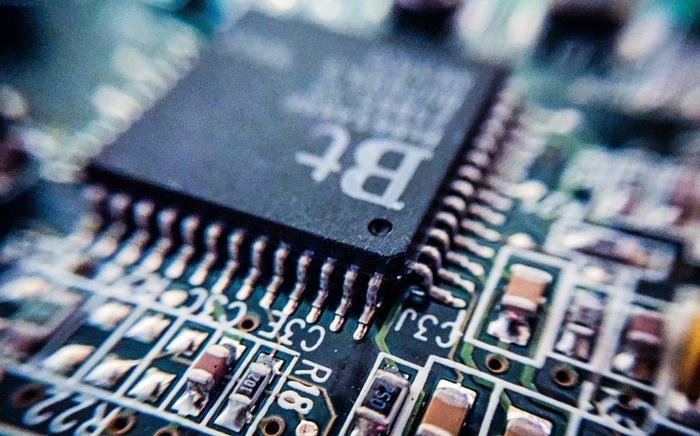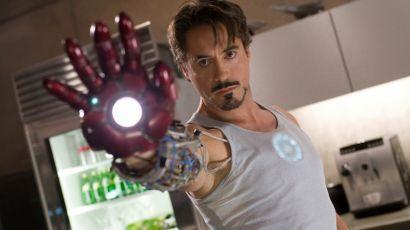We’re only a couple of days in to the new year and so the idea of 2016 still feels like the future…and, for now, most of it is. So, without a crystal ball at your disposal, how can anybody know what the future holds? As a professor of design history, it should come as no surprise that I firmly believe it can be divined through a healthy understanding of the past.
Telling you to dedicate the rest of your life to thoroughly studying the past, however, may be less appealing than simply looking at the predictions for 2016 being made by people who call themselves futurists. Rather than being a cult waiting for the mothership that requires a specific type of footwear, futurists are people who though not actually psychic, have convinced others of their uncanny abilities to read the present to make predictions about what is to come.
What’s amazing about futurists’ predictions is that they aren’t the kind of super vague, fortune cookie statements, filled with ambiguities that make them almost impossible to not find as a fitting clue when read with 20/20 hindsight. Instead, some of them are ultra specific and only time will tell if these soothsayers are uncannily accurate or just bat#@!t crazy.
 Not surprisingly, either if you are paying attention to technology or are able to use context clues to imagine what might be covered in this publication, 3D printing is on many of these futurists’ watch lists. The director of engineering at Google, Ray Kurzweil has given us his vision for the contributions that the technology will make in the next 10 years:
Not surprisingly, either if you are paying attention to technology or are able to use context clues to imagine what might be covered in this publication, 3D printing is on many of these futurists’ watch lists. The director of engineering at Google, Ray Kurzweil has given us his vision for the contributions that the technology will make in the next 10 years:
“3D printers will print human organs using modified stem cells with the patient’s own DNA providing an inexhaustible supply of organs and no rejection issues. [We will] be able to reprogram human biology away from many diseases and aging processes, for example deactivating cancer stem cells that are the true source of cancer and repair damaged organs with reprogrammed stem cells.”
Reading through a collection of predictions in Joe Carmichael’s piece The 2016 Predictions From Corporate Futurists Are Weird AF Wishful Thinking you might be struck by the same theme that hit Carmichael: apparently everything is getting bigger, better, wonderful…in his words, “the Fortune 500 is planning for just about everything to go up and to the right.” That’s not terribly surprising, because for them, it certainly is and with no sign of a change in that any time soon. If history teaches us anything, the haves seem to do well and Apple CEO Tim Cook’s prediction that “your kids will not know what money is” can seem a bit more ominous than he probably intended.
What I come away with from reading these predictions are a set of predictions of my own.
- If you predict that technology is going to do every amazing thing we’ve ever wished, you might be hired to be a futurist. If, on the other hand, you think things aren’t going to get better, you’re more likely to get a position standing on a street corner holding a “The End is Near” sign.
- It probably doesn’t matter too much if you are wrong in your predictions…the really important moments as a futurist come when you are right.
- 3D printing provides fertile ground for the imagination and if your beliefs about the future aren’t influenced by its existence, you are probably envisioning some sort of looming societal takeover led by the Amish.
 Will we print unlimited supplies or organs? Will each person be able to make whatever they need in their own homes? I think we are more likely to discover that 3D printing isn’t an unlimited wish granting machine, but rather a way of working out those things to which we assign value.
Will we print unlimited supplies or organs? Will each person be able to make whatever they need in their own homes? I think we are more likely to discover that 3D printing isn’t an unlimited wish granting machine, but rather a way of working out those things to which we assign value.
In other words, it’s another tool, albeit a wonderful one, but it isn’t the key to unlocking eternal harmony and unending youth. We are who we are and no amount of technology will change that, the Jetsons promised us flying cars, but it turned out that those belonged in the ‘nifty’ category and not in the ‘needed’ one. The key to moving from science fiction to simply science is the value of something beyond its initial coolness. That’s where 3D printing is wiggling around now, trying to find its space. We are busily producing things that give very clear indications of its potential but also some really awesome junk and the question is which one of these paths will we be able to look back at as the one we travelled.
I can’t tell you what is going to happen, and these futurists can’t either, but in 10 years, I don’t think we’ll be surprised because it all happens gradually. In the words of either Jean-Baptiste Alphonse Karr…or possibly Jon Bon Jovi: The more things change, the more they stay the same. Let’s hear your thoughts on these predictions in the 3D Printing’s Future forum on 3DPB.com.
Subscribe to Our Email Newsletter
Stay up-to-date on all the latest news from the 3D printing industry and receive information and offers from third party vendors.
Print Services
Upload your 3D Models and get them printed quickly and efficiently.
You May Also Like
Metal Powder Supplier Elementum 3D Added to $46B Air Force Contract
Elementum 3D, a Colorado-based developer and supplier of metal powders used in additive manufacturing (AM), announced that the company has been added to the vendors list in the fourth on-ramp...
Ursa Major Lands $28.6M AFRL Deal for 3D Printed Draper Engine Flight Demo
The US Air Force Research Laboratory’s (AFRL’s) Rocket Propulsion Division at Edwards Air Force Base has awarded a $28.6 million contract to Ursa Major for follow-on work related to the...
3D Printing Financials: Rocket Lab’s Record-Breaking Year and Over 20 Launches Coming in 2025
Rocket Lab (Nasdaq: RKLB) closed 2024 with its best year yet. The company launched more rockets, signed more contracts, and expanded deeper into spacecraft and satellite production than ever before....
US Air Force Taps Beehive to Study 3D Printed Jet Engines
Propulsion 3D printing firm Beehive Industries secured a contract from the U.S. Air Force Life Cycle Management Center through SOSSEC. SOSSEC is a company that manages Other Transactions Authority (OTA)...

































